1. The Wang lab has a space of ~1,500 square foot, capable of nanostructure fabrication, device/system integration, material analysis, biosample preparation, and electronic sensing
(1) A 200 sqft class-1000 cleanroom with yellow light.
(2) A 100 sqft garment changing area prior to entering cleanroom
(3) A 220 sqft room equipped with gas cabinet, gaslines, furnaces, biosafety cabinet, and tools
(4) A 680 sqft general lab area with fume hoods, lab benches, storage cabinets, water sinks, eye wash station, computers, etc.
(5) A 320 sqft BSL-1 optical and electronic characterization lab with optical table, microscopes, and electronics.
The major lab feature and equipment include:
| Microvoid® 4F-55 laminar flow fume hood |
 |
The 4F-55 workstation provides a Class 100 vertical laminar flow environment, with installed HEPA filter efficiency of 99.99% on particles 0.30 microns or larger. It allows minimal particle contamination on samples for electron beam lithography and nanoimprint lithography. Additionally, a built- in spinner bowl unit (HEADWAY R790) is mounted in the work deck on the right hand side of the hood for resist coating, and the PWM50 controller for the spinner is attached to the fume hood. |
| Acid and solvent fume hoods |
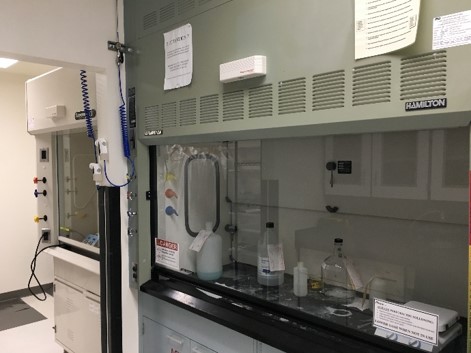 |
Our lab has a 4-foot hood designated for solvent use, and a 6-foot hood designated for acids and bases use purposes. |
| Heidelberg µpg 101 desk-top laser writer |
 |
The laser writer can expose features down to about 1 µm, ideal for prototyping purposes when the structure shapes and dimensions need exploration prior to optimization. |
| Nanoimprinter |
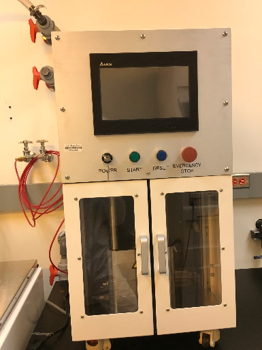 |
It has a capability of performing multi-mode NIL on wafers from pieces to over up to 4-inch wafers (e.g. directly hot embossing on plastics, UV NIL at room temperature, and combined thermal-UV NIL). The tool allows us to manufacture nanostructures over a wafer scale with a high throughput and a low cost. |
| Suss Mask aligner |
 |
The mask aligner has the capability of performing alignment with accuracy <1 um. We are working to establish alignment <200 nm with Morrie patterns. It is also capable of performing UV nanoimprint lithography. |
| Stand-alone photoresist spinner |
 |
The spinner is designated for coating photoresist in laser writer and photolithography. |
Denton thermal evaporator
|
 |
The 18-inch bell jar system features a large throw distance for better uniformity and angle control during deposition. |
| 3D printer |
 |
This is a home-built stereolithography setup for multi-material 3D printing. It is equipped with 0.45″ DLP® E4500MKII™ UV (385nm) light source for optical projection lithography. We current use it to fabricate polymer and metal microstructures. |
| PIE Scientific Plasma cleaner |
 |
The plasma cleaner with two automatic mass flow controller (MFC) regulated gas input and dual plasma sources design allowing unique direct/immersion cleaning mode and remote/downstream cleaning mode in one system. There are currently two different gas lines connected, oxygen and 5% H2 in N2. |
| Labconco Class II A2 Biosafety Cabinets |
 |
This five-foot REDISHIP Purifier® Logic®+ cabinet is used for BSL2 level biosample preparation. |
|
Purelab* Flex 3 Water Purifier
Branson sonicator
|
 |
The PURELAB flex 3 system provides tap to ultrapure water in one single unit. It provides a dispense flowrate of Up to 2.0 l/min, a max daily usage of 10 l/day, a resistivity of 18.2 MΩ.cm at 25°C, Organics (TOC) < <5 ppb, DNase <5 pg/ml, RNase <1 pg/ml.
The sonicator is used for sample cleaning and liftoff purposes
|
| PrepStart Air Abrasion sand-blaster |
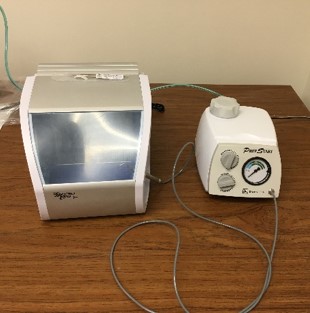 |
It is used for drilling millimeter holes in chip packaging |
Tube furnace and gas cabinet
|
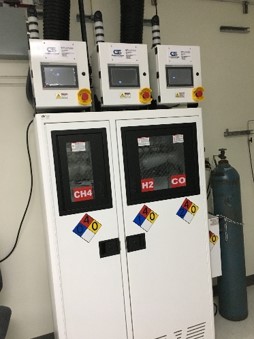 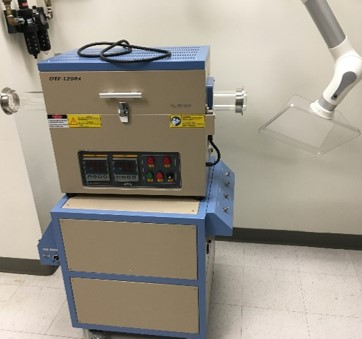 |
The two-zone growth tube furnace (Max 1200C, 3 channel gas mixer, Figure 1k) with vacuum pump for growth of low-dimensional materials. The three-gas cabinet (Collabra-Tech, Figure 1l) that provides flammable gases needed in material growth. The system has already integrated into the ASU fire alarm system. |
| A low-noise patch clamp electronic characterization setup |
 |
The setup includes a customized Faraday cage, a lowest-noise patch-clamp amplifier (Axopatch 200B, Molecular Devices), a low-noise data acquisition system (Axon Digidata 1550 Digitizer, Molecular Devices), control computer, and nanopore flow cell accessories |
| A customized microscopic spectroscopy and imaging system |


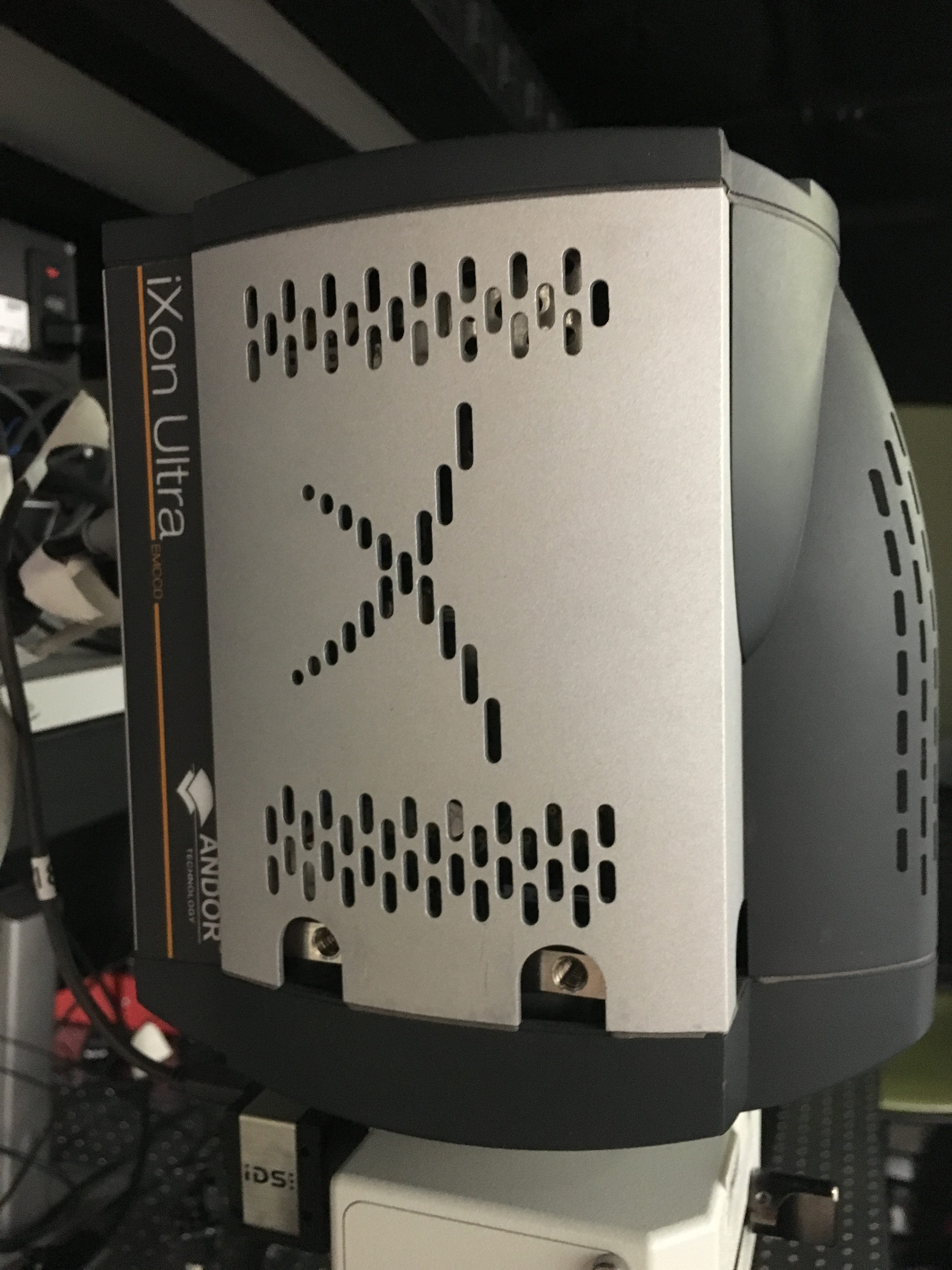
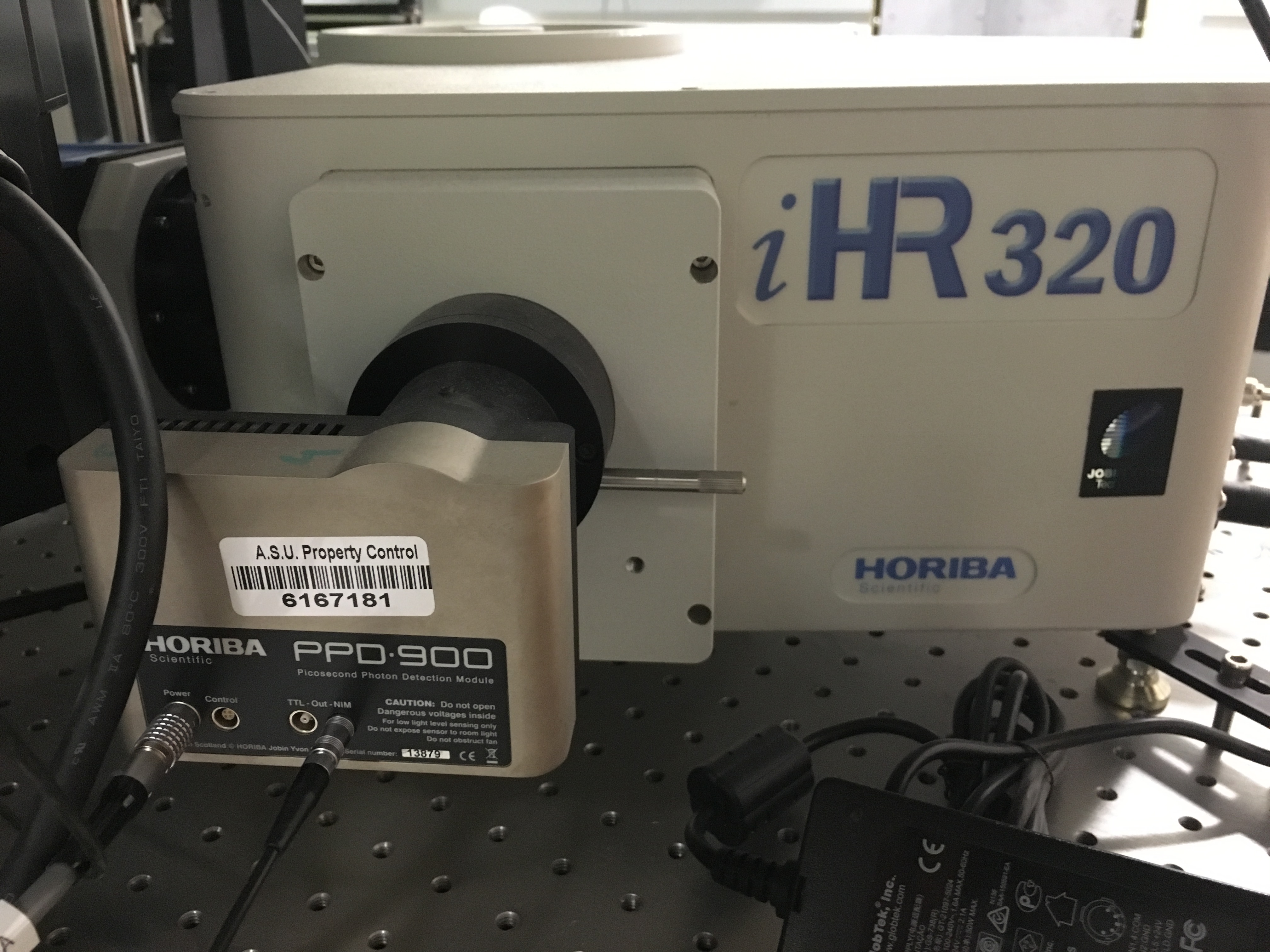 |
The system includes:
- upright fluorescence microscope (Olympus BX53),
- tunable laser source (NKT SuperK EVO): delivering more than 3 W total power in the 400-2400 nm range, and 450 mW in the visible; a repetition rate of 20 MHz, Beam diameter ~1 mm at 633 nm and ~2 mm at 1060 nm.
- a broadband 75W Xenon lamp,
- an imaging spectrometer system with a spectral range of 300 to 1500 nm and a spectral resolution of 0.15 nm (Horiba iHR320),
a low-noise CCD spectrometer (Horiba Syncerity) with down to -60°C thermoelectrical cooling and a broad spectral range (200 nm to 1100 nm),
- a high-sensitivty picosecond photon detector (PPD-900) with a time resolution of 0.2 ns and a spectral range of 230 to 900 nm,
- a high-speed (17 MHz readout, 56 full frame rate at 512 x 512 pixes) and low-noise (TE cooling to -100°C) EMCCD camera with and a spectral range of 300 nm to 1000 nm (Andor iXon DU897 Ultra),
- a vision camera,
- a variety of filter cubes for fluorescence, Raman, and broadband spectroscopy and imaging,
- operation software.
- a high power computer
It is capable of switching between bright field, dark-field, and fluorescent mode to perform spectroscopy, imaging, and lifetime measurement.
|
| Olympus IX 51 inverted microscope |
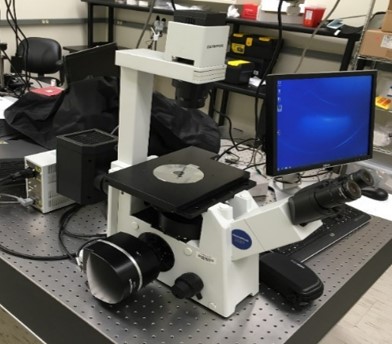 |
The microscope is capable of single molecule fluorescence imaging. The microscope is equipped with a dual function camera capable of color imaging and monochromic fluorescence imaging (Olympus DP80) and a high power computer |
Freezer and fridge
|
  |
Setting temperature -20C and -80C for freezer and 4C for fridge. They are used for storage of chemical and biological samples. |
Additionally, we routinely use the shared facilities at ASU for fabrication and characterization. https://cores.research.asu.edu/
2. Nanofab cleanroom (https://cores.research.asu.edu/nanofabrication-and-cleanroom/about)
The nanofabrication facilities have 4000 sq. ft. C100/M3.5 clean room with Si-MOS IC processing capabilities, including EBL system, mask aligner, evaporators, PECVD, LPCVD, SEM, and a number of dry etchers.
3. LeRoy Eyring Center for Solid State Science (https://cores.research.asu.edu/materials/about)
This center is the primary materials characterization user facility at ASU. The facilities—which include all of the equipment for carrying out cutting-edge materials science—are supported by a dedicated staff with a commitment to client engagement. The Eyring Materials Center is comprised of three facilities that provide equipment for specific materials research.
John M. Cowley Center for High Resolution Electron Microscopy
As a global leader in high resolution electron microscopy, ASU plays an important role characterizing critical properties of materials. This facility houses a dozen electron microscopes that can probe the physical, electronic and chemical structure of matter on an atomic scale. Instruments and techniques include: ion milling; electron microprobe, scanning electron microscopy, transmission electron microscopy, scanning transmission electron microscopy and aberration corrected electron microscopy.
Life Science Electron Microscopy
The laboratory is located in a purpose-designed suite in the sub-basement of the Life Sciences C-wing building. The entire 1,400-square-foot lab area has a vibration-isolating floor, which is critical for EM analysis. Interior space consists of five rooms containing microscopes and ultramicrotomes, a preparation lab with fume hood for chemical procedures and sample processing, and a room which houses a specialized instrument designed for high-pressure freezing of samples at liquid nitrogen temperatures. In addition to the life sciences community, the lab provides services to both on-campus and off-campus researchers from various disciplines that may require EM.
Goldwater Materials Science Facility
The Goldwater Materials Science facility provides an extensive array of analytical tools and techniques for optical, structural and surface analysis, surface morphology, chemistry and microscopy, and synthesis and processing. Widely used techniques include X-ray diffraction and topography, atomic force microscopy, FT-IR and Raman Spectroscopy, Auger and X-ray photoelectron spectroscopy, optical and stylus profilometry, residual gas analysis, ellipsometry, and thin film synthesis.
4. Biodesign Institute (https://biodesign.asu.edu/research/core-facilities)
The Biodesign Institute is a state-of-the-art research facility designed to create a multi-disciplinary approach to solving complex biological and environmental problems. Building A opened in 2004 with 172,000 sf of collaborative laboratory and office space. The Biodesign Institute contains common facilities for dishwashing and sterilization. High-quality (18 megaohm) distilled water is available in each lab area.





















